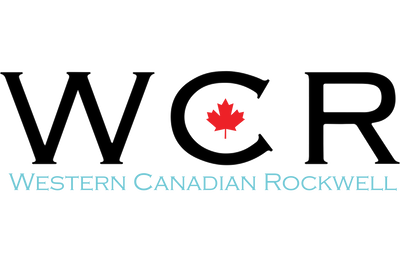HYDRAULIC STEERING FAQ'S
Hydraulic Steering FAQ
Here's a guide to selecting a hydraulic steering system for your rig and a few key points to consider. A couple things to keep in mind, this article will be written with the intention of using only full hydraulic systems, we will not be addressing hydraulic assist, nor will we address the uses of hydraulic systems used on the street. To start we will discuss the main types of steering options and the benefits and any issues with them.
Single Ended Ram
This is the simplest and most cost effective system, a single ended ram is a basic ram that simply expands and retracts. Most setups mount one end of the ram to a fixed point on the axle and the other end on the tie rod. The tie rod ties both steering knuckles together, and is run off the factory pump and through an orbital valve. This system works well and can be pieced together for a fairly reasonable cost.
The downside to this setup, the ram does not use the same amount of fluid to extend as it does to retract the ram. This is because the cylinder shaft displaces the volume in the cylinder when retracting. This will net a couple different issues, first off it will require more turns of your steering wheel to extend the ram than it will to retract it. Secondly, because you are losing surface area you are also losing hydraulic force, meaning it will be easier to turn the wheel in one direction vs the other. Third, because the cylinder requires more fluid on one direction vs the other and the volume of fluid output from the steering valve is a fixed displacement, it will take more turns of the wheel to steer the rig in one direction vs the other. From real world experience if the system is properly sized and the pump is up to the task the system will work fairly well
Dual Single Ended Rams
This system uses 2 single ended rams working together with a tie rod tieing both knuckles together. The benefits of this system is the 2 single ended rams will balance each other out, there will not be any of the displacement issues mentioned with the single ram setup.
The down side to this setup is its a fair bit more complex than the other cylinder options doubling the the number of cylinders also doubles the number of connections, hoses and moving parts vs a single setup. Another common issue is plumbing and sizing the system properly, 2 individual cylinders will require a lot of fluid volume to steer reasonably quick, if the cylinders are too large this problem gets worse exponentially, also with all the extra parts this kit can be expensive.
Double Ended Ram
A double ended ram is a single cylinder with a shaft out each end, the cylinder body is mounted solid to the axle and each rod is linked to each steering knuckle. This system does not have any of the displacement issues found with the single cylinder setup and is significantly simpler than the dual and single cylinder setup. Essentially there are only only 4 pivot points in the setup and no tie rod is required as the cylinder shaft keeps both knuckles tied together. This is a very strong and simple setup.
The downside, sometimes the large cylinder body can be difficult to mount, also because these are not typically mass produced for other industries like single ended rams they can be higher in cost.
Get your Double Ended Rams Here:
Orbital Steering Valves
Orbital valves are fairly simple, basically all they do is meter the amount of fluid that flows to your steering cylinder as you turn the steering wheel. They are available in many different sizes often measured in Cubic centimeters (CC) or milliliters (ML). The larger the displacement the orbital is, the more volume per turn will be sent to your cylinder. Essentially increasing the speed of your steering, BUT also increasing demand on your pump, this is why its critical to properly size everything in your steering system.
Another very important thing to mention about orbital valves, there are 2 versions of return ports, one is referred to as an open center, how this version works is when the steering wheel stops turning the fluid is returned back to the reservoir, this is what is required when running a setup used in 99% of off-road vehicles.
The other version is commonly found in heavy equipment like tractors or forklifts and is referred to as a closed center. When the steering stops turning on a closed center orbital the pressure supply to the orbital is blocked off and is not allowed to return to the reservoir. If used in an automotive setup this will deadhead your pump causing the pressure relief to open, this will cause excessive heat and damage or ruin your pump very quickly. If sourcing used hydraulic parts from heavy equipment, be sure to know exactly what you are putting on before hooking it up. The few dollars you save by running used parts can add up quickly if they cause damage to other parts of your system not to mention the headache that comes with it
Find your Orbital Here:
Basic rules for installing hydraulic steering on large vehicles
Reservoir
- make sure the reservior is mounted higher than the pump never the same height or lower.
- -10 fittings and hose min size for the feed
- From the res to the pump-12 recommended.
- Try to keep away from heat sources like exhaust manifolds
Hoses
- -8 fittings and hoses are recommended from the pump to the orbital, along with the return line to the cooler and or reservoir
- -8 fittings and hose is also recommended for 2.5- 3" diameter rams.
- Keep in mind the less resistance to flow the less work your steering pump has to do, this ultimately cuts down on heat in the system witch is a major killer of hydraulic components especially pumps
Here is a list of important items when building and/or trouble shooting a full hydraulic kit for large tire trucks
Hoses, Fittings and Location
Feed Line
- -12 minimum line from reservoir to pump
- Reservoir needs to be mounted higher than the pump
- Make sure there are no kinks or funny loops in feed line
Pump to Orbital
- -8 high pressure line and fittings from pump to orbital
- Minimum working pressure of 3000PSI
Orbital to Steering Cylinder
- -8 high pressure line from orbital to steering cylinder
- Minimum working pressure of 3000PSI
Return
- -8 low pressure line return to reservoir
High Volume Pump
Too low of flow or pressure will cause the steering to be stiff or slow
Cooler + Filter
Only mounted on the return side of the system
Orbital
Make sure is not a closed center unit from forklift or tractor, check for proper volume by calculating your rams surface area. Information and Calculations Here
Reservoir
Bigger is better, the more fluid in the system the better it will cool, also make sure the oil isn't foaming
Troubleshooting
When trouble shooting, the first thing to check is for pressure, ideally the pump should be making 1500-1700 psi no less than 1200psi.
Gauge adapters are available Here
Check out our products available at the links below!



